Ambra Medda launches online design shop L’ArcoBaleno
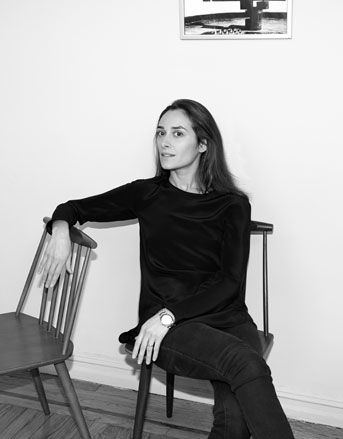
It was only a matter of time before Design Miami founding director Ambra Medda jumped back into the design hot seat again. Three years since leaving the glittering fair she helped to create, Medda is launching a new venture today: L'ArcoBaleno, an online portal dedicated to collectible design. With an offering that includes cultural reporting, sophisticated e-commerce capabilities and of course, Medda's cherry-picked selection of designers and products, the site touts itself as a source of superior design, accessible to a global audience.
L'ArcoBaleno, which means 'the rainbow' in Italian, debuts with an exciting cross-section of design products available to purchase. Medda has counted on her design connections to bring the treasures of the industry's most esteemed galleries, including Demisch Danant, Galerie Kreo, Johnson Trading Gallery and Rossana Orlandi, to the online marketplace. The site also showcases fashion and technology; visitors can purchase architectural rings by Beate Klockmann, gold necklaces by Nektar de Stagni or even Teenage Engineering's portable OP-1 synthesizer.
'L'ArcoBaleno will reflect the entire spectrum of design - that includes collectible objects, but also fashion, food, music, architecture, art and technology,' says Medda, who holds the title of co-founder and creative director. 'Our hope is that it will influence the global design conversation, and inspire and engage collectors, curators, and devotees of creative fields.'
The site comes armed with a strong editorial element, including original features and video content that has all been developed by an in-house team and an international network of writers. Ranging from trend analysis in the markets and commentaries on the state of design to vibrant travel logs and profiles with the design world's brethren, L'ArcoBaleno is set to be a multi-pronged vessel of inspiration and creativity.
Medda has spent the last year and a half fine-tuning the concept for the site, teaming up with Oliver Weyergraf, who serves as CEO and brings bags of digital commerce experience with him from his previous roles as CEO of the online marketplace Erento and the Director of Trust and Safety at eBay. She has also roped in the taste-making talents of several high-profile friends, like David Adjaye, Tom Dixon, Reed Krakoff and Pharrell Williams, who provide guiding advice and feedback, though knowing Medda, a collaboration or two might well be around the corner.
We caught up with Medda before the big launch to find out exactly what she has in store...
What were your intentions for the site?
I wanted to bring together the design community, create a fun and informative site surrounding the world of design, offer the most extraordinary design from around the world, and support and promote emerging talent.
Is there a significant meaning behind the name?
I love the idea of the rainbow because it feels inclusive and joyful. I felt as though we all needed a jolt of energy in the industry. The breadth of design that we are covering also relates to the entire spectrum of the rainbow. It sounds beautiful. And last, but not least, there is no better feeling than raising your eyes to the sky and seeing a rainbow. I find it totally electrifying.
What are some of the standout features that will set it apart from other curatorial websites?
The diversification of material: you'll find anything from a rare historical desk to a beautifully crafted African basket to a chic electric bicycle. It's very personal and easy to relate to, and it doesn't feel sterile or massive. We show prices for most of our merchandise and we do all of the fulfillment, including shipping. Mainly our content, both editorial and video, will set us apart from our competitors.
Can you share some of the editorial content that you have in store?
I'm proud of our feature stories, including a wide range of Q&As and stories about places and spaces. They are like history lessons that help you put some of our material into context, and short stories about objects. There's quite a variety of subject matter ranging from Bjork's Biophilia project that explores technology, education and music, to the education system in design colleges and how that forges talent and impacts the market. We're also collaborating with Alla Carta, a new Italian magazine dedicated to food and design. And we have a beautiful story shot by Martien Mulder the photographer form NY that shows the work of Le Corbusier in India, and so on.
Are you working on any other projects or is this currently your main focus?
This is most definitely my main focus. It's a relatively large undertaking, given I need to scout the world for exceptional design and oversee the creative direction of the site. There's also a lot of backstage and commercial work. And I have a blog that I update daily, with notes on my findings and encounters.
What additional features for the site do you hope to introduce later down the line?
There are many things we're planning for the coming months: a calendar of design related events around the world, including gallery and museum shows, festivals and fairs. Our social media will also become more active and engaging. We'll be staging special events too: little curated shows, dinners, talks, and all sorts of lively gatherings. There are a number of services we hope to be able to offer, like design advisors who give clients advice in their acquisitions. We would like to connect designers directly with clients to work on on-site installations.
How do you think L'ArcoBaleno will impact the design/art landscape?
Hopefully it will bring great design to a wider audience and also shed light on designers and craftsmen from around the world never seen before.
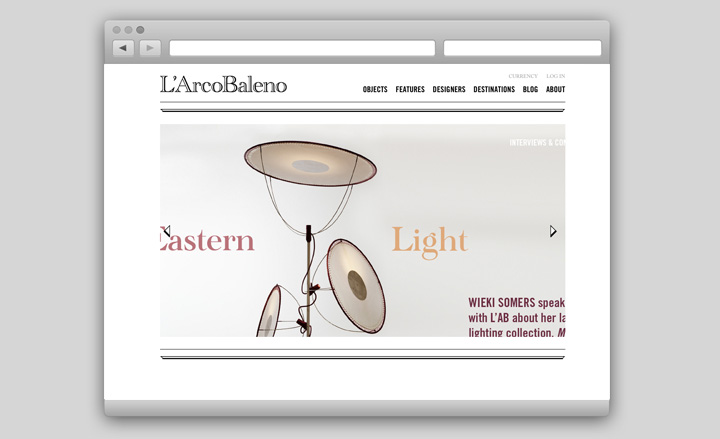
The website is expectedly slick with a minimalist design. It encompasses cultural reporting, sophisticated e-commerce capabilities and Medda's hand-picked selection of designers and products
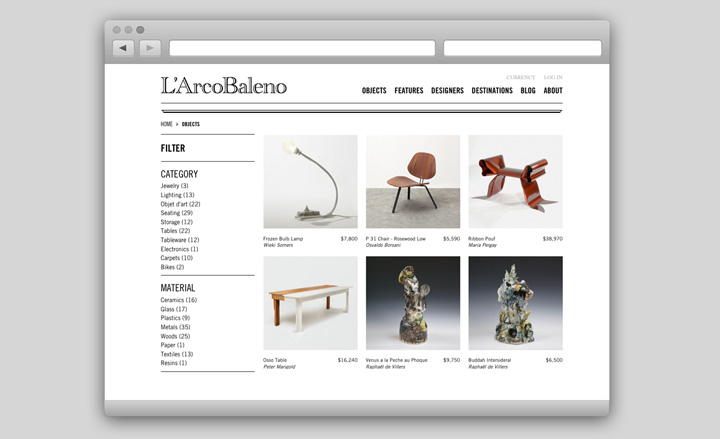
L'ArcoBaleno debuts with a vast cross-section of products available to purchase. Customers on the hunt for design are able to filter their search by category, material, region and era

The site has a strong editorial element, with original features and video content developed by an in-house team and an international network of writers

For the 'Destinations' section, Medda has counted on her design connections to bring the treasures of the industry's most esteemed galleries to the online marketplace, such as Demisch Danant, Galerie Kreo, Johnson Trading Gallery and Nilufar

L'ArcoBaleno co-founder and creative director Ambra Medda shares a personal selection of design favourites from the new site...
'Embroidered Blue' bench, by Rooms: Nata Janberidze and Keti Toloraia of Georgia-based design studio Rooms find inspiration in the mix of European and Asian cultures they encounter in their hometown Tbilisi. For their 'Embroidered Blue' bench, they have embellished a simple, Modernist form with blue and white, locally hand-embroidered upholstery. A bit of glamour comes through the golden, brass legs

'Neon Alphabet', by Study O Portable: Bernadette Deddens and Tetsuo Mukai of London-based Study O Portable have reimagined the neon sign. Made from borosilicate glass tubes and patinated fine silver, each 10"-inch letter of the Neon Alphabet reflects ambient light as a frozen spectrum of deep, rich color. They are like jewelry for your walls. Combine letters as you like; this product is made to order

'Bike Style Man', by Velorapida: A vintage style bike, both elegant, solid and fast. These handcrafted electric bikes have everything you don't need to see concealed: the battery and all the wiring. Finally someone resolved that! Velorapida is a new, Milan-based company dedicated to creating the most extraordinary electric bicycles. Each Velorapida bike is handcrafted with a fine attention to detail. The body is modeled on vintage designs, and the battery is concealed within an elegant carrier mounted on the handlebars. All of the cabling runs through the frame, to ensure that the function doesn't interfere with the beauty of the form. The Style Man model is a vintage style, electric bike featuring a reinforced steel frame and rod breaks

'Bike Style Man', by Velorapida: A vintage style bike, both elegant, solid and fast. These handcrafted electric bikes have everything you don't need to see concealed: the battery and all the wiring. Finally someone resolved that! Velorapida is a new, Milan-based company dedicated to creating the most extraordinary electric bicycles. Each Velorapida bike is handcrafted with a fine attention to detail. The body is modeled on vintage designs, and the battery is concealed within an elegant carrier mounted on the handlebars. All of the cabling runs through the frame, to ensure that the function doesn't interfere with the beauty of the form. The Style Man model is a vintage style, electric bike featuring a reinforced steel frame and rod breaks

'Green Triangle Lamp', by Katie Stout, with Sean Gerstley: A collaboration between furniture designer Katie Stout and ceramics artist Sean Gerstley, the 'Green Triangle Lamp' will enliven any surface it's placed upon. It's a Kelly-green triangle with a light bulb protruding from one side - handmade and one of a kind

'Antique Chair Revisited', by Gu Yeli: 'Antique Chair Revisited' is a whimsical seating collection by award-winning Chinese artist Gu Yeli. Salvaging old, abandoned, often damaged furniture from alleyways and roadsides, Yeli applies colorful woolen pompoms to transform the unwanted into desirable treasures. By up-cycling artifacts of China's past, her work takes on a conceptual framework through which we can glimpse China today

'Antique Chair Revisited', by Gu Yeli: 'Antique Chair Revisited' is a whimsical seating collection by award-winning Chinese artist Gu Yeli. Salvaging old, abandoned, often damaged furniture from alleyways and roadsides, Yeli applies colorful woolen pompoms to transform the unwanted into desirable treasures. By up-cycling artifacts of China's past, her work takes on a conceptual framework through which we can glimpse China today

'Bent Glass Bench', by Naoto Fukasawa: Naoto Fukasawa is recognized as a master of industrial design, and this flawless piece, in bent glass, is a rare example of his work in the medium. The 'Bent Glass Bench' is one of seven prototypes, each subtly unique, made by Glas Italia as they worked to establish a production process for this elegant piece of furniture. Made from 12mm thick, transparent, extra-light glass, the particular curvature of the glass, combined with a special tempering process, lends the seemingly fragile structure an extraordinary load resistance

Jomon Coppa, by Ritsue Mishima: Glass artist Ritsue Mishima was born in Kyoto, but has lived in Venice since 1989. Inspired by the effects of light reflection, she works exclusively in the medium of clear glass. Her designs are produced in Murano in collaboration with master glassblower Andrea Zilio, with cold-work carried out by Giacomo Barbini. The textured colourlessness of her creations lends a luminosity that harmonises with any environment
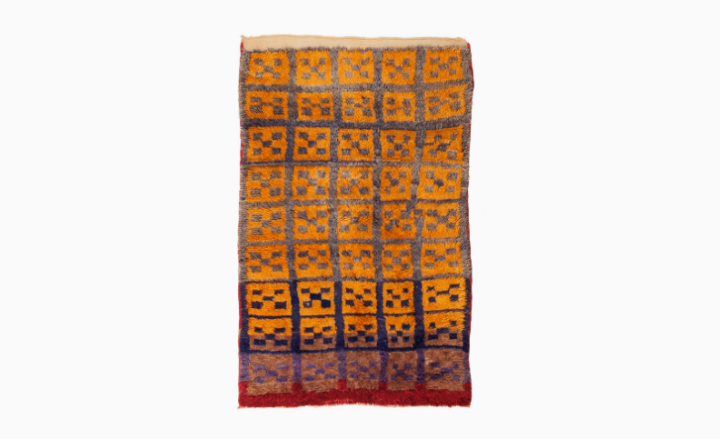
Tülü Rug: Powerful, colourful, geometric, and stylized, the Tülü rugs of Anatolia were handcrafted from sheared Angora, or goat wool. Among the very first hand-knotted rugs - a technique developed during the transition from hunter-gatherer to agrarian culture - they were the comfortable, warm-weather sleeping pallets of shepherds, who would spend the summers in the grassy pastures of the Anatolian highlands. The diamond and zigzag motifs mimic the natural patterns found in animal pelts. This example is a unique antique dating from the early 20th century
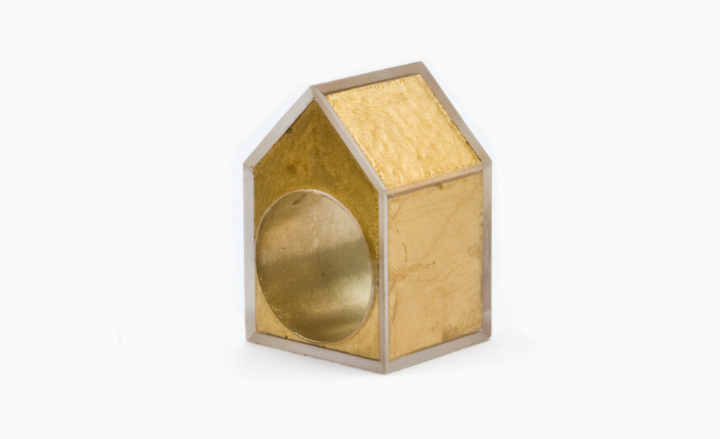
'Glass House Ring', by Beate Kockmann: From her broaches to her bracelets and rings, Beate Klockmann's pieces have an architectural, yet playful quality that keeps the eye lingering. The Glass House ring is a hollow construction of sapphire glass, filled with 18k gold leaf. It was produced as an edition of 8 in only two ring sizes 51 or 49, 5 of them left

'Elysee Table', by Pierre Paulin: In 1969, Pierre Paulin was commissioned by the Mobilier National - the French government's decorative arts and design agency - to design the interiors and furnishings for President George Pompidou's private apartment. Pompidou, however, insisted that the operation must be reversible: the preexisting architecture and decoration had to be preserved. Paulin proceeded to cover the Baroque walls with a stretch jersey; the material that would become his signature. Paulin also designed furniture for the Paintings Room, Smoking Room, and Dining Room, the first prototypes for which were completed in 1971 - including the painted aluminum and smoked glass Elysee Dining Table. In 1972, Mobilier National signed a distribution agreement with Alpha International to produce the Elysee line as a small series, making this iconic piece of furniture design history available to a select private collectorship

'Japanese Lacquer Bunko', from Vanderven Oriental Art: The ancient Japanese lacquering technique is a labour-intensive process in which multiple layers of varnish are applied, polished, and reapplied. Each layer becomes finer and more pure than the last. This Japanese Bunko is a red-lacquered document box decorated with metallic chrysanthemums and birds. The interior is treated with a dark gold speckled lacquer, and the rims are finished in silver
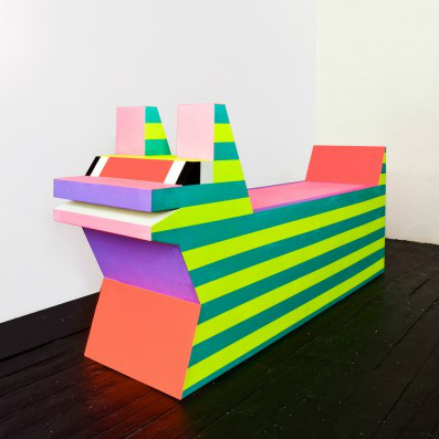
Dog Bench, by Ben Jones: Multimedia artist Ben Jones' work - which he describes as 'meta-graffiti' - is vibrant and mischievous. Through form and colour, he creates novel and adventurous environments for us to inhabit, calling to mind old school video games. No matter its location, the Dog Bench from Jones' Beehaven Series will never fail to be noticed

One-Horned Kachina Doll, by Hopi Indians: Kachina dolls, or Katsinas, are representations of the deities and spirits of Arizona's Hopi Indians. They were given to Hopi children by dancers during special ceremonies. This One-Horned Kachina, carved from cottonwood root, is the 'rain messenger' in the Hopi pantheon; his songs were believed to be prayers for lightning and thunder and the heavy rains they bring. It is a rare, early example, dating to the 1920s or 1930s
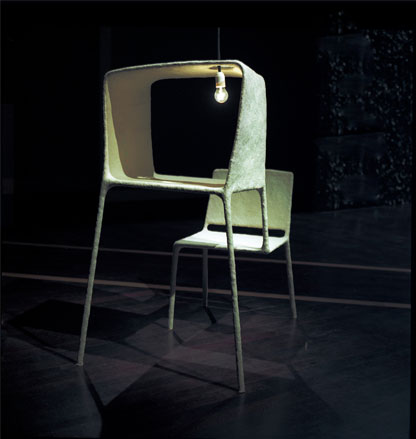
Diversity N. 12 White Paper, by Nacho Carbonell: This piece is part of Carbonell's Diversity collection that was commissioned by Galleria Rossana Orlandi for an exhibition at Spazio Gianfranco Ferré in April 2010. The seventeen objects in this stunningly original collection are each based on the same sculptural form, amalgamating a desk and chair reminiscent of mid-20th-century school furniture. The collection dances joyously along the line between art and design, sculpture and furniture, exploring a variety of different materials, from gravel and thorns to monofilaments, or, in this case, white papier-mâché over a metal structure. This version was created as an edition of three
Receive our daily digest of inspiration, escapism and design stories from around the world direct to your inbox.
Pei-Ru Keh is a former US Editor at Wallpaper*. Born and raised in Singapore, she has been a New Yorker since 2013. Pei-Ru held various titles at Wallpaper* between 2007 and 2023. She reports on design, tech, art, architecture, fashion, beauty and lifestyle happenings in the United States, both in print and digitally. Pei-Ru took a key role in championing diversity and representation within Wallpaper's content pillars, actively seeking out stories that reflect a wide range of perspectives. She lives in Brooklyn with her husband and two children, and is currently learning how to drive.
-
 A breathtaking exhibition celebrating modernism’s transatlantic ties soars above Manhattan
A breathtaking exhibition celebrating modernism’s transatlantic ties soars above ManhattanCurated by interior designer Andre Mellone, 'Crossed Trajectories' at Galerie Gabriel's penthouse explores connections between nomadic post-war creatives Jean Royère, Roberto Platé and more
-
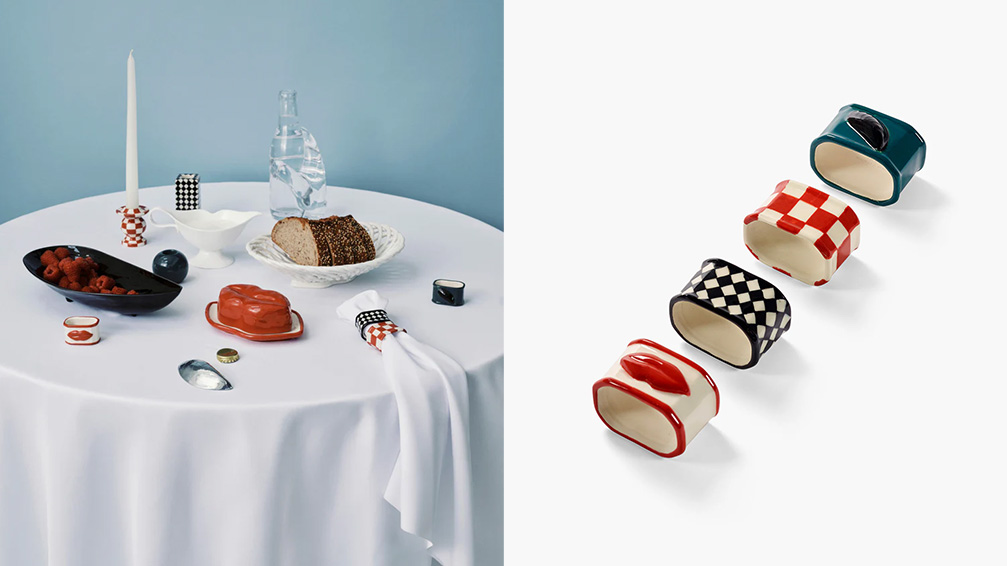 Sculptural, design-led napkin rings for festive tables
Sculptural, design-led napkin rings for festive tablesThe simple napkin ring harbours the potential to bring a stylish punch of personality to any table setting
-
 How Peter Saville came to art direct the best of contemporary culture
How Peter Saville came to art direct the best of contemporary cultureFrom Peter Saville's first steps with Factory Records and legendary album designs to his later work in art and fashion: we chart the history of the British art director